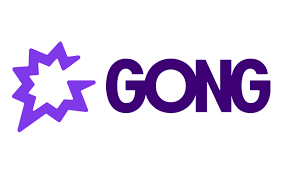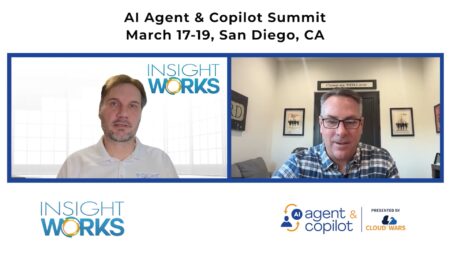Who They Are
SaaS software supplier Gong launched in 2015 on a premise that many CEOs or CFOs would agree with: Leaders lack adequate visibility into their selling cycle to conduct revenue planning with high confidence and accuracy.
Despite spending lots of time reviewing notes in CRM systems, revenue decisions are still too often based on guesswork rather than facts. This can result in misaligned efforts across functions including sales, marketing, and operations, as well as lost deals.
Gong founders Amit Bendov and Eilon Reshef applied artificial intelligence (AI) to the problem so that customers could record customer conversations and have the intelligence to process them — understanding exactly what was being said, whether it was good or bad. The company’s system, The Gong Reality Platform, promises to “coach” teams to deliver revenue and close business while delivering recommendations to better manage interactions and sending up warning flags where needed.
“There was a belief that people are going to type notes into a CRM. The reality is that very few people do it and when they do, it’s typically ‘good meeting, talk next week,’” says Reshef, the co-founder who’s also chief product officer. With the AI functionality of Gong’s system, a customer can paint a more detailed picture of all interactions for greater visibility, enabling leaders to build accurate forecasts, manage deal pipelines, and coach sellers to close more business.
The approach shows clear signs of working: The company has secured $584 million in venture capital; investors include Salesforce Ventures and Cisco Investments. Gong has over 3,500 customers and 1,200 employees. The company has offices in San Francisco, Tel Aviv, and Dublin.
What They Do
The Gong Reality Platform is designed to support three core teams within the business-to-business selling environment:
- Sales: it helps salespeople close winnable deals and “uplevel” their performance
- Customer success: helps deliver renewals and drive more revenue
- Marketing: helps to better understand and align with customers
The company positions its software as supporting four distinct use cases:
Use Case #1: Deal Execution
Gong aims to help customers gain precise insight (“find the truth”) in their pipeline through efficient, accurate deal execution. It provides visibility from contact to close in order to address risks early, before deals are lost, and provide a clear indicator of pipeline health.

“We provide a layer of AI/machine learning that guides you through the process,” and lets managers know which accounts or deals are at risk and the relative status of all deals, line by line, Reshef explains.
Use Case #2: Coaching
The Gong system performs coaching that’s squarely focused on helping sellers on the processes and steps to close deals.
Customers can build a coaching program using live data to create guidance that leads to greater wins. The system will provide a snapshot of deal execution and soft skills on a sales team, while providing personalized guidance so managers can help sellers thrive. The system will also capture coaching activity across teams to drive consistency in the approach to selling and managing sellers.
Using data provided by Gong, a manager might ask, “When was the last time you discussed pricing with this customer? Let’s discuss how you should be talking about pricing,” Reshef says. “Every manager’s life combines execution moments and coaching moments. Both of them are critical.”
Use Case #3: Forecasting
Customers use Gong to develop reliable rollups and get predictable revenue insights. This can take the guesswork out of forecasting and enable sellers to submit accurate forecasts in a timely way.
Historically, sellers have had to submit a forecast in a spreadsheet format, even if they’re using Salesforce or another automation tool. Exceptions or questions require lengthy, detailed meetings to hash out the forecast, the reasons behind it, and any actions that need to be taken.

“We fast-forward the process; in addition to capturing all of the information, we’re providing a layer of AI/machine learning insight on top of it that guides you through the process” of building an accurate forecast.
Eilon Reshef, co-founder and chief product officer
Gong still requires a seller to submit a forecast, but the system will automate key steps and eliminate a big chunk of the back and forth by showing both the manager and the seller which deals are at risk and which deals are solid.
“Now you can have an intelligent discussion around those two, line by line,” Reshef explains. “We fast-forward the process; in addition to capturing all of the information, we’re providing a layer of AI/machine learning insight on top of it that guides you through the process.”
Use Case #4: Market Insights
Gong provides market insights aimed at helping managers and sellers stay ahead of the curve on strategic initiatives and gain early insights into what’s working and not working, thereby tying initiatives to objectives and proving impact.
The market insights functionality would provide competitive themes that sellers identify, as well as pricing trends as they develop. “You can show how it trends, how it affects your business, and get the voice of the customer, either in raw format or in aggregated format,” Reshef explains. Gong provides all data in a quantitative format (for C-level execs) and qualitative for those that need additional detail.
Integrations
While the descriptions above might raise questions about whether Gong competes or overlaps with CRM systems, the company clearly positions it as non-competitive with Salesforce or others in the CRM market. In fact, its platform integrates with technology from Salesforce, Hubspot, Apollo.io, Slack, Microsoft Teams, and many others.
Who They’ve Impacted
Tackle.io is a Boise, Idaho-based software firm whose technology helps B2B software companies scale sales through the cloud.
Before using Gong, sales leaders and reps spent 10-plus hours per week on forecasting tasks, managing forecasts in spreadsheets by way of sales leaders collecting input from teams at different weekly cadences.

Gong’s forecasting capabilities help tackle.io sellers identify which deals to focus on while providing visibility throughout the funnel and using data to improve selling processes.
Now, close dates are more accurate. Salesforce integration ensures clean data and solid insight into customers. Sellers enter “opportunity notes” into Gong and data is automatically synced from Salesforce. This has resulted in a 40% reduction in time spent forecasting, freeing managers to focus on helping sellers to sell, and helping sellers focus a greater portion of their time on selling.
Looking to the Future
Gong has a clear direction as it relates to Generative AI and all the buzz surrounding ChatGPT, now likely the most prominent implementation of Generative AI, albeit with a mostly consumer focus (example: “Chat GPT Wrote My AP English Essay. I Passed“).
Reshef positioned Generative AI as a third layer in the progression of AI, sitting on top of transcribing and then understanding (the first two of which Gong does today with its core product). “If you don’t understand what’s in the conversations, you can’t even apply generative AI,” he says. So before generative capabilities, AI is mainly used for prediction or classification. He described generative AI as a product concept, and ChatGPT as “brilliant marketing” on top of it.
The company plans to leverage Generative AI in two ways:
First, it’s going to use GPT3’s API (application programming interface) to apply generative AI in a sales context, creating follow-up on customer communications via email. Gong’s implementation will auto-generate emails for sellers based on the context of past communication captured by Gong; it will create a suggested message that still requires human review and a limited amount of customization. Reshef says it should be able to automate 80% to 90% of message creation, freeing significant time for salespeople. This capability is in proof of concept with customers today.
Second, in the future, the company will offer a Generative AI implementation that Gong currently refers to as dynamic briefs. Consider a salesperson selling into a large company with a wide range of interactions via email, video calls, phone conversations, and more. The existing Gong platform captures all that detail, but with the addition of Generative AI, the detail can be assembled into a readable format with discussions organized by the categories (pain points, customer goals, and so on) that are of interest to the specific reader.
“It gives you, succinctly, the pieces of information you care about in a readable format whenever you need them,” Reshef says, adding the company expects to deliver this functionality to customers in 2023. “The statistics say that people spend 30% to 40% of their time selling; this is going to free up a big chunk of their 60% because they’re not doing all this mundane work of taking notes, sharing information, searching for information, and passing information.”
Conclusion
The high-profile backers, and high-dollar-value backing, that Gong has secured say a lot about the company’s readiness to serve enterprise customers and the alignment of its product with problems that customers face today.
Application of AI to the selling process is yet another way this tech is expanding its footprint throughout the enterprise while making another function more efficient. Those sales efficiency gains are more important than ever today, as CEOs and CFOs closely monitor every inbound dollar to gain the greatest possible intelligence into their revenue planning. Gong has carved out a strong position in helping to drive what is inarguably today’s number 1 business objective: Revenue.
For more exclusive coverage of innovative cloud companies, check out Cloud Wars Horizon here:










